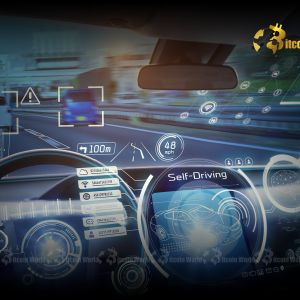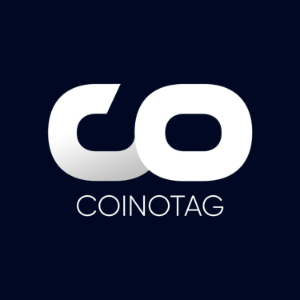Volkswagen Hivemapper Partnership: How Crypto Revolutionizes Autonomous Driving
8 min read
BitcoinWorld Volkswagen Hivemapper Partnership: How Crypto Revolutionizes Autonomous Driving The automotive industry, a realm traditionally associated with mechanical prowess and engineering marvels, is now undergoing a profound transformation. At the heart of this evolution lies the convergence of cutting-edge autonomous driving technology with the disruptive power of blockchain. Imagine a world where your car not only drives itself but also contributes to a vast, real-time mapping network, earning you crypto rewards in the process. This isn’t science fiction; it’s the exciting reality unfolding with the groundbreaking Volkswagen Hivemapper partnership. This collaboration between a global automotive giant and a Solana-based decentralized mapping project signals a pivotal moment for both industries. It’s a testament to how innovative Web3 solutions are moving beyond speculative assets and into tangible, real-world applications, directly impacting the future of transportation. The Genesis of Innovation: Volkswagen Hivemapper Partnership Takes the Wheel In a move that has captured the attention of tech enthusiasts and automotive industry observers alike, Volkswagen’s autonomous driving technology unit, ADMT (Autonomous Driving Mobility Technology), has officially partnered with Hivemapper. This alliance is not merely a symbolic gesture; it’s a strategic integration aimed at significantly enhancing the operational capabilities of self-driving vehicles. Hivemapper, built on the high-throughput Solana blockchain, is revolutionizing how maps are created and updated. Unlike traditional mapping services that rely on centralized entities and proprietary data, Hivemapper leverages a global network of contributors. These contributors, equipped with dashcams, capture street-level imagery, which then feeds into Hivemapper’s “Bee Maps.” This crowdsourced approach ensures a dynamic, ever-evolving map that is constantly updated with the freshest data. For Volkswagen’s ADMT, the appeal of Bee Maps is clear: access to an unprecedented volume of real-time, granular mapping data. This data is critical for refining navigation systems, identifying road changes, and ultimately, ensuring the safety and efficiency of their autonomous ride-hailing operations. The partnership exemplifies a forward-thinking strategy, recognizing that the future of mobility demands data that is not only accurate but also perpetually current. Why Real-Time Mapping is Crucial for Autonomous Driving The journey towards fully autonomous driving is fraught with complex challenges, and one of the most significant hurdles is ensuring vehicles can navigate dynamic environments safely and reliably. Traditional static maps, no matter how detailed, cannot keep pace with the constant changes on our roads – be it new construction, temporary lane closures, altered traffic patterns, or even recent road damage. Consider these critical aspects where real-time mapping data makes an undeniable difference: Dynamic Environment Adaptation: Autonomous vehicles need to react instantly to unexpected events. A map that shows a recently closed road or a new detour can prevent dangerous situations and ensure smooth rerouting. Localization and Positioning: High-definition maps provide rich contextual information that helps autonomous vehicles pinpoint their exact location with centimeter-level accuracy, even in areas with poor GPS signals. Perception Enhancement: While onboard sensors (Lidar, cameras, radar) provide immediate surroundings, pre-mapped data offers a broader context, helping the vehicle anticipate what’s beyond its immediate line of sight. Safety and Redundancy: Real-time map updates act as a crucial layer of redundancy, cross-referencing sensor data and providing an additional safety net against potential perception errors or sensor failures. The partnership with Hivemapper directly addresses these needs, providing Volkswagen’s ADMT with a robust solution to gather and integrate constantly refreshed geographical information. This isn’t just about convenience; it’s fundamentally about elevating the safety and reliability standards for autonomous vehicles, paving the way for wider public acceptance and deployment. Unlocking Precision with Real-Time Mapping Data How exactly does Hivemapper deliver on the promise of superior real-time mapping data? The core innovation lies in its decentralized and incentivized approach. Instead of relying on a fleet of dedicated mapping vehicles, Hivemapper harnesses the power of a global community. Here’s a breakdown of the process: Crowdsourced Data Collection: Individuals purchase Hivemapper dashcams and install them in their vehicles. As they drive their daily routes, the dashcams continuously record street-level imagery and spatial data. Data Submission and Verification: The collected data is uploaded to the Hivemapper network. Advanced AI algorithms process this raw imagery, extracting crucial mapping features such as road signs, lane markings, building outlines, and points of interest. The AI also verifies the accuracy and uniqueness of the data. Map Updates: Once verified, the new or updated map data is integrated into Bee Maps. This iterative process ensures that the maps are not only comprehensive but also reflect the most current state of the road network. Accessibility for Partners: Companies like Volkswagen’s ADMT can then access this continuously updated, high-definition mapping data, integrating it directly into their autonomous vehicle navigation and perception stacks. This model allows for unparalleled freshness and coverage. Imagine thousands of vehicles constantly updating the map, providing a living, breathing digital twin of our road infrastructure. This continuous feedback loop is precisely what autonomous systems need to navigate the complexities of the real world with confidence and precision. The Power of Crypto Incentives: Fueling a Decentralized Future What motivates thousands of individuals globally to contribute valuable data to Hivemapper? The answer lies in the ingenious application of crypto incentives . This is where the blockchain aspect of Hivemapper truly shines, creating a powerful economic model that drives participation and ensures the network’s growth and vitality. Contributors who map new areas or update existing ones with fresh imagery are rewarded with HONEY tokens, Hivemapper’s native cryptocurrency. This tokenized reward system creates a direct financial incentive for individuals to participate, transforming everyday commutes into opportunities to earn. Key benefits of this crypto-incentivized model include: Scalability: By decentralizing data collection, Hivemapper can scale its mapping efforts globally much faster and more cost-effectively than traditional centralized mapping companies. Fair Compensation: Contributors are directly compensated for their valuable data, fostering a sense of ownership and community. This contrasts with models where user-generated data is often monetized by platforms without direct compensation to the creators. Transparency: Transactions and rewards on the Solana blockchain are transparent and verifiable, building trust within the community. Global Reach: Anyone, anywhere, can become a contributor, breaking down geographical barriers to data collection and ensuring diverse and comprehensive map coverage. The use of Solana as the underlying blockchain is crucial here. Solana’s high transaction throughput and low fees make it an ideal platform for managing the vast number of micro-transactions involved in rewarding thousands of contributors. This efficient infrastructure ensures that the incentive mechanism remains viable and attractive, continuously drawing new mappers into the network. DePIN Technology: A New Frontier for Real-World Applications Hivemapper is a prime example of a burgeoning category within the Web3 ecosystem known as DePIN technology , or Decentralized Physical Infrastructure Networks. DePIN projects leverage blockchain technology and crypto incentives to build and maintain real-world physical infrastructure, bypassing traditional centralized intermediaries. Think of it this way: instead of a single corporation owning and operating all the servers for a cloud service, or all the cell towers for a telecom network, DePIN aims to distribute the ownership and operation of these physical assets among a decentralized community. In Hivemapper’s case, the “physical infrastructure” is the global network of dashcams and the data they collect, forming a decentralized mapping infrastructure. Other examples of DePIN include: Decentralized Wireless Networks: Projects like Helium enable individuals to host hotspots, providing decentralized internet connectivity. Decentralized Storage: Networks like Filecoin and Arweave allow users to rent out their unused storage space, creating a distributed cloud storage solution. Decentralized Energy Grids: Initiatives exploring peer-to-peer energy trading and decentralized power generation. The Volkswagen-Hivemapper partnership underscores the growing maturity and practical utility of DePIN. It demonstrates that blockchain technology can be leveraged not just for financial transactions or digital collectibles, but for building robust, resilient, and economically efficient real-world services. This collaboration validates the DePIN model as a viable and powerful paradigm for the future of infrastructure development. The Transformative Impact: Benefits for All Stakeholders The synergy between Volkswagen’s ADMT and Hivemapper brings forth a multitude of benefits, extending beyond just the immediate partners: For Volkswagen (and Autonomous Vehicle Developers): Access to fresh, high-definition mapping data for enhanced navigation and safety. Reduced costs compared to maintaining proprietary mapping fleets. Faster iteration and deployment of autonomous features due to dynamic map updates. A competitive edge in the rapidly evolving autonomous driving market. For Hivemapper Contributors: Opportunity to earn cryptocurrency (HONEY tokens) for contributing valuable data. Participation in a global, decentralized network. Contribution to the future of autonomous technology. For the Web3 Ecosystem: Strong validation of the DePIN model and its real-world applicability. Increased adoption and awareness of Solana blockchain. Demonstration of how crypto incentives can drive large-scale, beneficial collaboration. For the Public: Potentially safer and more efficient autonomous transportation services. Faster deployment of advanced mobility solutions. A glimpse into a future where physical infrastructure is more democratized and community-driven. Navigating the Road Ahead: Challenges and Future Outlook While the Volkswagen-Hivemapper partnership represents a monumental leap forward, the path to widespread adoption of DePIN in critical infrastructure is not without its challenges. These include: Data Quality and Verification: Ensuring the consistent accuracy and reliability of crowdsourced data at scale remains paramount. While AI verification is in place, continuous improvement and robust auditing mechanisms are vital. Regulatory Landscape: Autonomous driving and decentralized technologies operate in complex and often evolving regulatory environments. Navigating these legal frameworks will be crucial for global expansion. User Adoption and Retention: Sustaining and growing the contributor network requires ongoing incentives, user-friendly interfaces, and clear value propositions. Technological Integration: Seamlessly integrating decentralized mapping data into proprietary automotive systems requires sophisticated engineering and collaboration. Despite these hurdles, the future looks incredibly promising. The convergence of automotive innovation and blockchain technology is set to redefine urban mobility and infrastructure development. As more major players recognize the immense potential of decentralized networks, we can expect to see an acceleration in the development and deployment of DePIN solutions across various industries. The Volkswagen-Hivemapper alliance is more than just a partnership; it’s a blueprint for how traditional industries can harness the power of Web3 to solve complex real-world problems, creating a more efficient, transparent, and collaborative future. Conclusion: The groundbreaking collaboration between Volkswagen’s ADMT and Solana-based Hivemapper marks a significant milestone in the journey towards fully autonomous vehicles and the broader adoption of Web3 technologies. By tapping into Hivemapper’s crypto-incentivized, crowdsourced real-time mapping data, Volkswagen is poised to enhance the safety and precision of its self-driving operations. This partnership vividly illustrates the immense potential of DePIN technology to build robust, decentralized physical infrastructure, offering a glimpse into a future where community participation and crypto incentives drive innovation in critical sectors like autonomous driving . It’s a powerful testament to how the digital economy can directly impact and improve our physical world, setting a new standard for collaboration and technological advancement. To learn more about the latest crypto market trends, explore our article on key developments shaping decentralized physical infrastructure networks and their impact on institutional adoption. This post Volkswagen Hivemapper Partnership: How Crypto Revolutionizes Autonomous Driving first appeared on BitcoinWorld and is written by Editorial Team

Source: Bitcoin World



